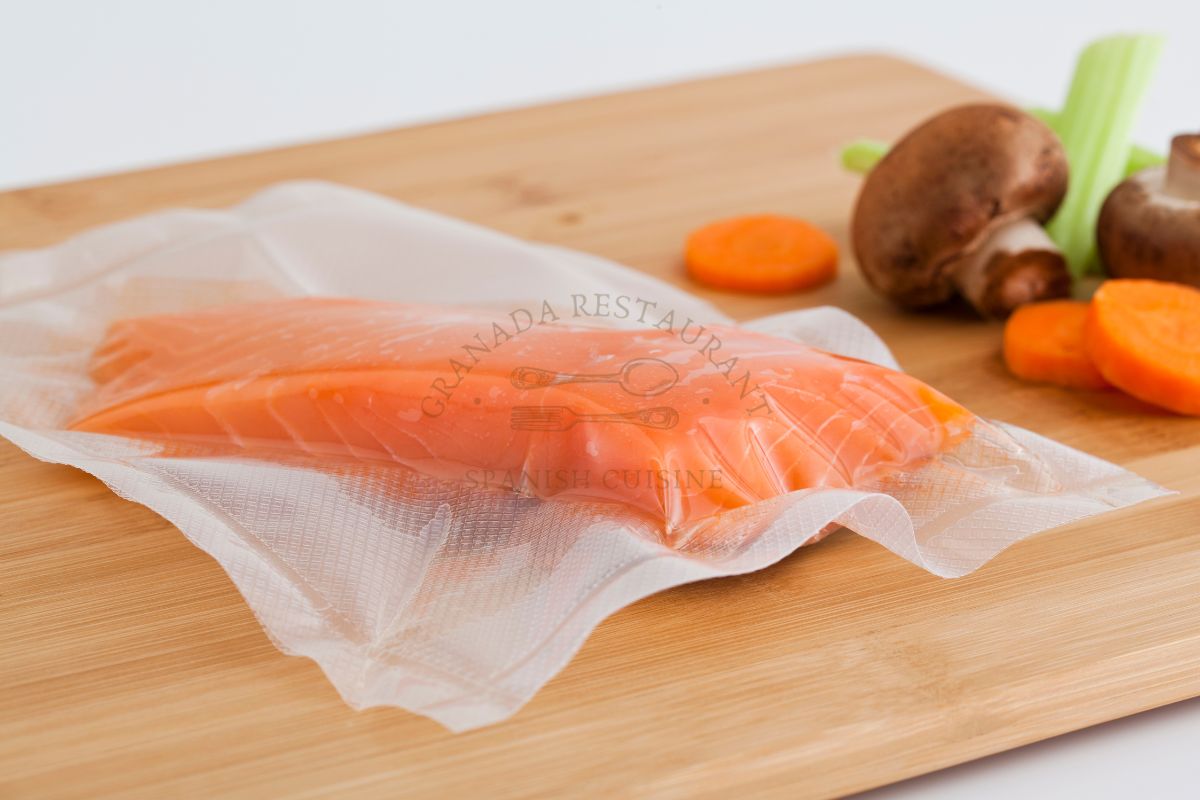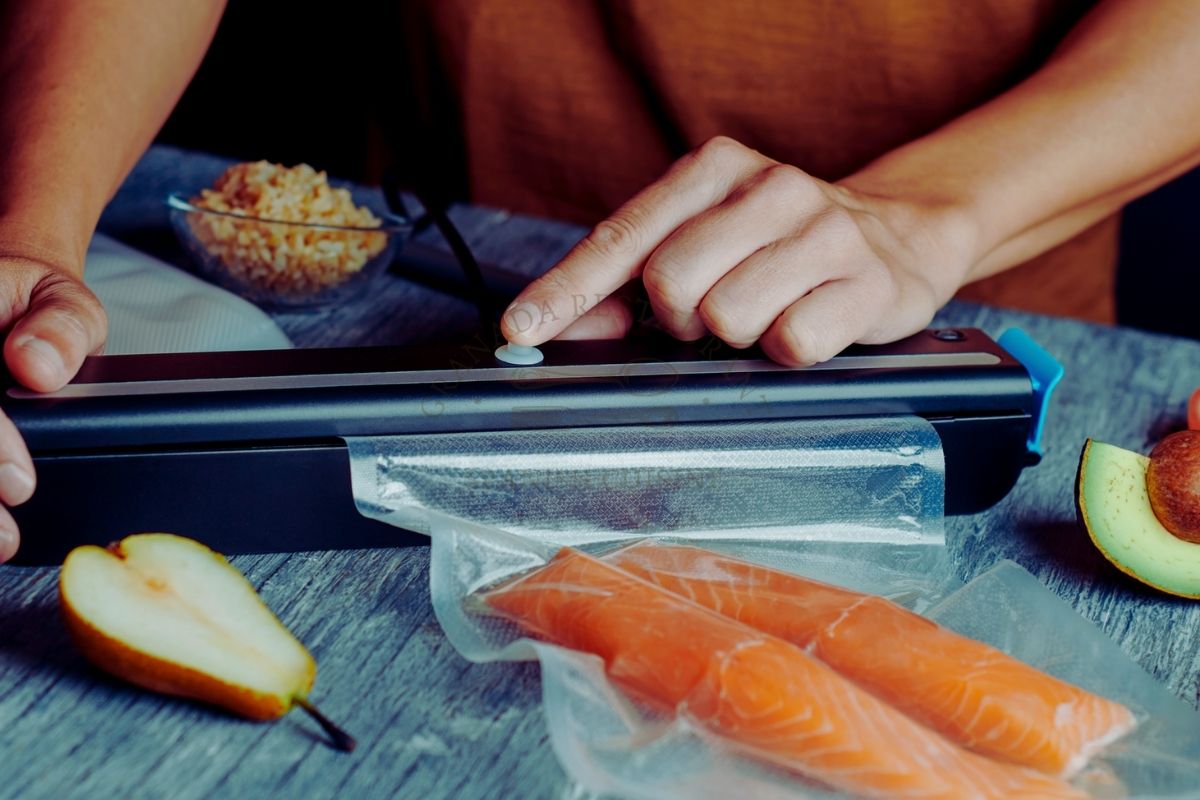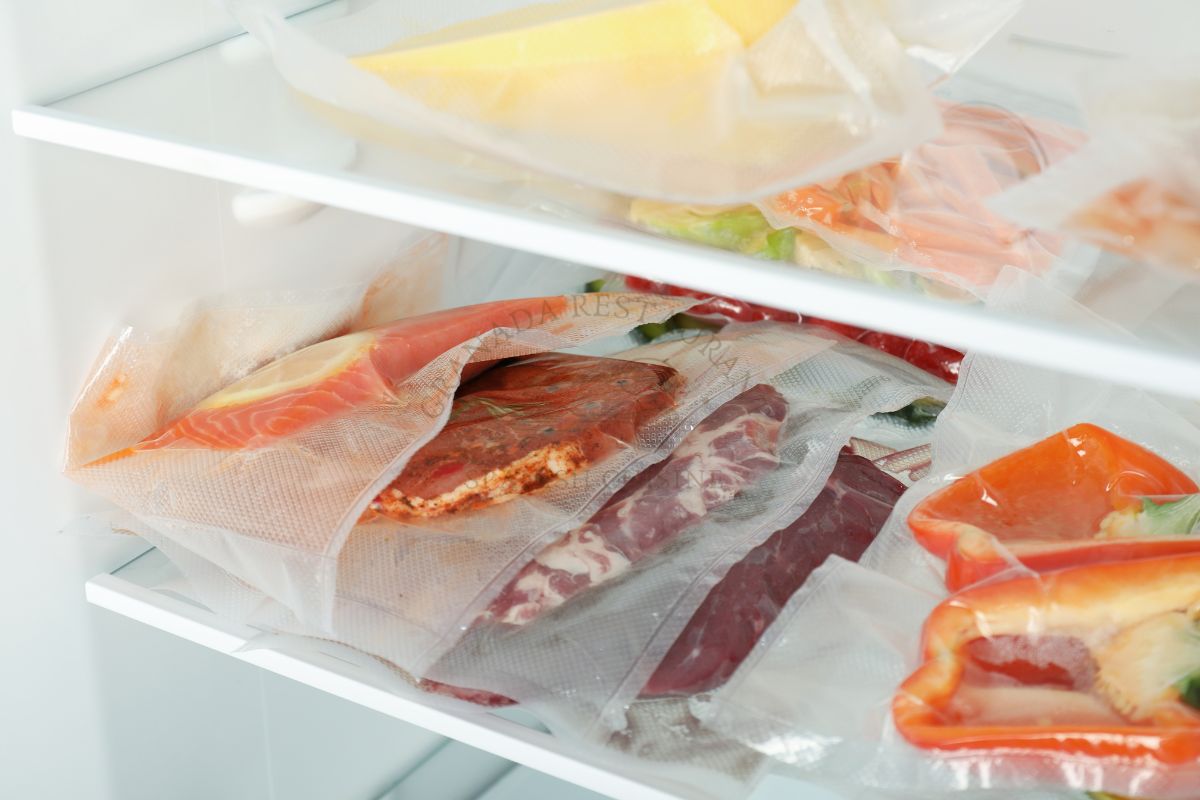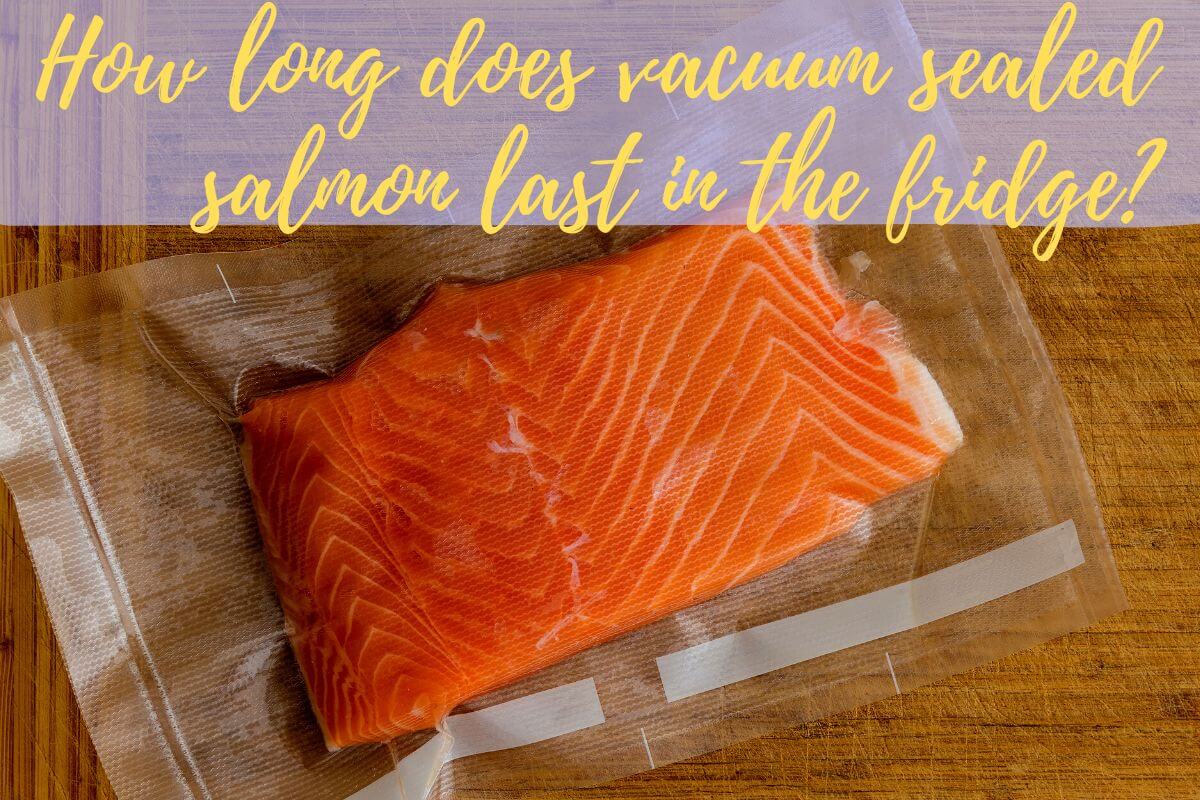How long does vacuum sealed salmon last in the fridge? You wonder!
Do you struggle with knowing how long certain perishable ingredients will stay fresh? Vacuum sealed salmon is one protein source that can easily be kept in the fridge for an extended period of time, but have you ever wondered exactly how long this type of salmon will stay good? Well, here’s your answer.
In this blog post, we break down everything you need to know about vacuum sealed salmon so that it can enjoy all its deliciousness without worry!
If you’re in a hurry, the short answer is:
Vacuum-sealed salmon will stay fresh in the refrigerator for up to two days. After that period of time, it’s best to either eat the salmon or place it in the freezer.
Read on to see how you can properly keep your salmon fresh longer!
What Are Vacuum Sealing and Its Benefits for Preserving Food?
Vacuum sealing involves completely removing oxygen from a package using a vacuum sealer. This creates an airtight environment for the food, which helps to prevent bacteria growth and preserve flavor and freshness. Plus, it can help extend the shelf life of salmon by up to 5 times what it would be without the airtight seal!

The benefits of preserving food are endless. Vacuum-sealed salmon will stay fresh even longer if it’s kept frozen. This extended shelf life makes it one of the most convenient proteins to have on hand, especially if you’re someone who enjoys meal prepping or making larger batches of food. It also helps reduce waste by allowing you to buy in bulk and store unused portions for future use.
How Long Does Vacuum Sealed Salmon Last in The Fridge?
Vacuum-sealed salmon can last up to two days in the fridge, but for complete freshness, try and enjoy it soon after that time period is over. To preserve your fish further, place it in the freezer – where it can stay good for around 6 months! Keep an eye on when expiry dates are nearing so you don’t miss out on experiencing delicious, freshly cooked salmon.
| Check out: Surprising Significance of Ice Crystals in Meat: What They Tell Us
Vacuum sealing is the perfect way to keep your salmon tasting fresh and delicious! By keeping out unwanted odors, you can ensure that the flavor remains front and center when it’s time for dinner.
How to Vacuum Seal Fresh Salmon
Vacuum sealing salmon is a simple process that involves the following steps:
- Prepare the salmon: Clean and fillet the salmon, removing any scales, bones, and skin. Cut the salmon into portions if desired.
- Season the salmon: Season the salmon with salt, pepper, herbs, or any other seasonings of your choice.
- Place the salmon in a vacuum seal bag: Place the salmon in a vacuum seal bag, making sure to leave enough room for the air to be removed. You can also add any additional ingredients, such as lemon or garlic, to the bag.
- Seal the bag: Seal the bag using a vacuum sealing machine. This machine removes the air from the bag and seals it, creating an airtight seal that helps preserve the salmon’s freshness.

- Store the vacuum sealed salmon: Store the vacuum sealed salmon in the fridge or freezer, depending on when you plan to use it. Vacuum sealed salmon can last for several weeks in the fridge or several months in the freezer, helping to extend its shelf life and maintain its quality and flavor.
How to Properly Store Vacuum Sealed Salmon in The Fridge
When storing vacuum-sealed salmon in the fridge, you should always put it on a shelf at least two inches away from any other food. This will help reduce the risk of cross-contamination and keep your salmon fresher for longer.
Also, make sure to take it out of the refrigerator once every few days and inspect it for any signs of spoilage. If you notice any changes in color or smell, discard the salmon immediately.
What to Cook with Vacuum Sealed Salmon
Vacuum sealed salmon is an excellent and versatile option for a variety of healthy meals. It’s easy to prepare, flavorful, and rich in protein.
Pan-searing the salmon with herbs
For a simple yet delicious meal, you could try pan-searing the salmon with herbs like rosemary or thyme, along with a squeeze of lemon juice. This will give the dish an extra layer of flavor.
Baked salmon
You can also bake the salmon in the oven by brushing it with olive oil and some seasoning of your choice.
Poached salmon in white wine
Alternatively, you could poach the vacuum sealed salmon in white wine and serve it alongside roasted vegetables or a light salad for a satisfying dinner.
Grilled salmon
If you’re looking for something lighter and healthier, you could try grilling the salmon with some marinade to bring out its sweet smoky flavor.
Sushi with vacuum-sealed salmon
Finally, serving vacuum sealed salmon on top of sushi rice with seaweed and fresh herbs makes for an irresistible combination.
No matter how you cook it – vacuum sealed salmon is sure to be a winning dish that’ll please even the pickiest of eaters!
Common Mistakes to Avoid when Storing Vacuum-Sealed Salmon in The Fridge

One of the most common mistakes people make when storing vacuum-sealed salmon in the fridge is not inspecting it regularly. If you don’t inspect the salmon, you won’t be able to tell if it has gone bad, and you may end up eating spoiled fish.
And if you plan on freezing the salmon after two days, make sure to do it within 24 hours of purchasing it so that it doesn’t go bad.
The other common mistake is forgetting to label the vacuum-sealed salmon with the date of purchase and how long it can stay in the fridge before it needs to be frozen or discarded. This helps you keep track of how fresh your fish is and ensures that you don’t consume anything that has gone bad.
Lastly, you don’t want to store the salmon near strong-smelling food, such as onions or garlic, as this can affect the flavor of the fish.
Frequent Asked Questions
How to defrost vacuum sealed salmon?
When you’re ready to eat the vacuum-sealed salmon, you should thaw it slowly in the refrigerator. This will give the fish time to defrost without drastically changing temperature or texture. You can also opt to submerge the sealed bag of salmon into cold water and let it sit for up to 30 minutes.
Can bacteria grow and live in a vacuum sealed bag?
No, bacteria cannot survive in a vacuum-sealed bag. The removal of oxygen from the package eliminates most bacteria, thereby preserving the freshness and flavor of the salmon for longer. Therefore, as soon as the fish is caught or purchased, it must be vacuum sealed. Bacteria might grow faster when the fish is left out at room temperature for a longer period of time.
Read More: How Long Does Better Than Bouillon Last After Opening?
How long does vacuum sealed smoked salmon last in the refrigerator?
The normal shelf life for cold-smoked salmon, like pre-sliced vacuum-packaged smoked salmon, is between 30 and 60 days. If you want to extend the shelf life of smoked salmon, it should be stored in a refrigerator that is colder than 40 degrees Fahrenheit.
Can vacuum sealed salmon go bad?
Yes, vacuum-sealed salmon can go bad if not stored properly. If the package is damaged or compromised in any way, it could potentially lead to spoilage. Additionally, if the fish has been left out at room temperature for too long, bacteria might start to grow on its surface.
Check out this video for How to Vacuum Seal Fish
Fresh salmon vacuum sealed using a home vacuum sealer can last 2-3 days in the fridge, while commercially sealed salmon can last up to 2 weeks. To extend the shelf life of your vacuum sealed salmon, be sure to store it properly in the fridge. You can keep vacuum sealed salmon in the bottom drawer of your refrigerator, where it will be protected from temperature fluctuations and other sources of potential contamination. When storing salmon in this way, you can safely enjoy fresh, delicious seafood for up to two weeks. Thanks for reading! We hope you found this information helpful.
Further Reading:
- Storing and Thawing Vacuum-Packaged Fish (Fact Sheet)
- Enhanced preservation of vacuum-packaged Atlantic salmon by hyperbaric storage at room temperature versus refrigeration
- 3 Ways to Cook Frozen Salmon

I am Benjamin Nunez, and I love Spanish food, Italian food, and seafood. I have worked in kitchens all my life. I started as a dishwasher when I was just a teenager, and worked my way up to being a head chef.
I specialize in Spanish cuisine, but I can make any kind of Italian or seafood dish you want. My kitchen is always open! Website: https://granadarestaurant.com/

